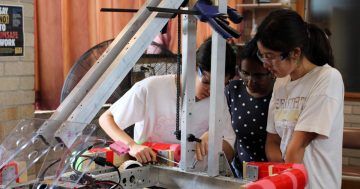
More than three-quarters of employees surveyed say the introduction of AI has actually added to their workload. Photo: File.
Dan Schawbel has found that the rush to implement artificial intelligence into business practices is leaving many workers even more stressed and burnt out.
There’s no question that artificial intelligence, especially generative AI tools such as ChatGPT, has had an enormous impact on the world of work.
Generative AI can support employees in numerous ways, enhancing productivity, creativity, and efficiency across various roles and industries.
However, the widespread excitement around AI may be outpacing employees’ ability to learn how to use these tools in a way that meaningfully enhances their productivity.
A new study by my company, Workplace Intelligence, and Upwork, has found that 77 per cent of employees say AI has actually added to their workload in at least one way.
This comes at a time when many people are already overwhelmed and exhausted at work.
Some 71 per cent of the employees we surveyed say they’re burnt out, and nearly two-thirds report struggling with increasing employer demands.
Our research revealed that AI isn’t always delivering on its productivity promise. For example, 39 per cent of workers reported spending additional time reviewing or moderating AI-generated content.
Others noted they’ve had to invest time learning how to use these tools, and some say they’re being asked to do more work now they’re using AI.
All of this is in stark contrast to the excitement and optimism executives are feeling, with 96 per cent saying they expect the use of AI tools to increase their organisation’s overall productivity levels.
While executives believe their workforce is highly skilled and comfortable with these tools, the reality is that nearly half (47 per cent) of employees using AI say they have no idea how to achieve the productivity gains their employers expect.
Here are some ideas on how employers can better support their workforce on their journey to AI adoption, and other ways leaders can boost AI expertise within their organisations.
Offer AI training programs tailored to different roles: It may seem obvious that any new workplace tool would require a well-developed implementation plan.
However, most organisations are relying on employees working things out on their own — a risky and unreliable strategy.
Leaving workers to fend for themselves is also likely to cost them a lot of wasted time and effort as they sift through the wide variety of available training programs.
Smart leaders aren’t just offering educational resources to upskill employees, they’re also ensuring this training is highly tailored to individual teams or employees.
Generative AI tools have numerous applications in the world of work, and it’s critical that employers guide their staff to the right technologies for their specific roles.
Allow time for experimentation and learning: One of the main reasons people are struggling to realise the productivity gains of AI is that they simply haven’t had enough time to learn how to use the new tools.
There’s no doubt that most workers are feeling an immense amount of pressure to move quickly.
Leaders who want AI to feel like a beneficial tool and not a hassle should make the path to implementation less stressful.
This means allowing workers to take a more long-term approach to learning about AI and incorporating it into their roles.
Employers also need to ensure employees have adequate time during the workday to take training courses and experiment with new tools.
At an even more fundamental level, employers need to address any existing workforce burnout issues before they pile on new expectations for AI adoption.
Workers who are barely scraping by simply won’t have the bandwidth to learn about these new tools, no matter how beneficial they might be.
Leverage external talent to fill in the gaps: If your workforce is struggling with overwhelming levels of burnout, it might not make sense to burden them with learning how to use AI tools right now.
Instead, it may be wise to bring in external experts – for example, data scientists or AI consultants – who are already familiar with these tools and can move quickly to implement them.
AI certainly isn’t going anywhere, and it’s already being used to solve some of the greatest challenges of our time.
When it comes to generative AI, these tools can be used to boost productivity, eliminate mundane or repetitive tasks, and more.
However, for many of today’s overworked employees, it may all be too much, too soon.
Business leaders who don’t want their organisation to fall behind may need to revisit AI training programs, shift their expectations for their workforce, or consider leveraging alternative talent pools.
Dan Schawbel is a bestselling author and managing partner of Workplace Intelligence, a research and advisory firm helping HR adapt to trends, drive performance and prepare for the future.
This article is part of his Workplace Intelligence Weekly series.











